
Designing Inductors with a Simulation App at Bombardier Transportation
Bombardier Transportation, a mobility solution provider for trains around the world, has partnerships with 200 major cities in 60 countries. In fact, more than 500 million passengers ride a train that features Bombardier products every day! The components within these trains need to meet requirements from different customers as well as specifications from a variety of suppliers. We talked to an engineer at Bombardier Transportation who built a simulation app for inductor components for trains that helped speed up the design and development process…
From Chugging Along to Full Steam Ahead
Mateusz Rynkiewicz, a magnetic component engineer at Bombardier Transportation, works with customers and suppliers to make sure components fit within a train’s design specifications. These requirements can be based on climate requirements, industry constraints, customer needs, and supplier feedback.
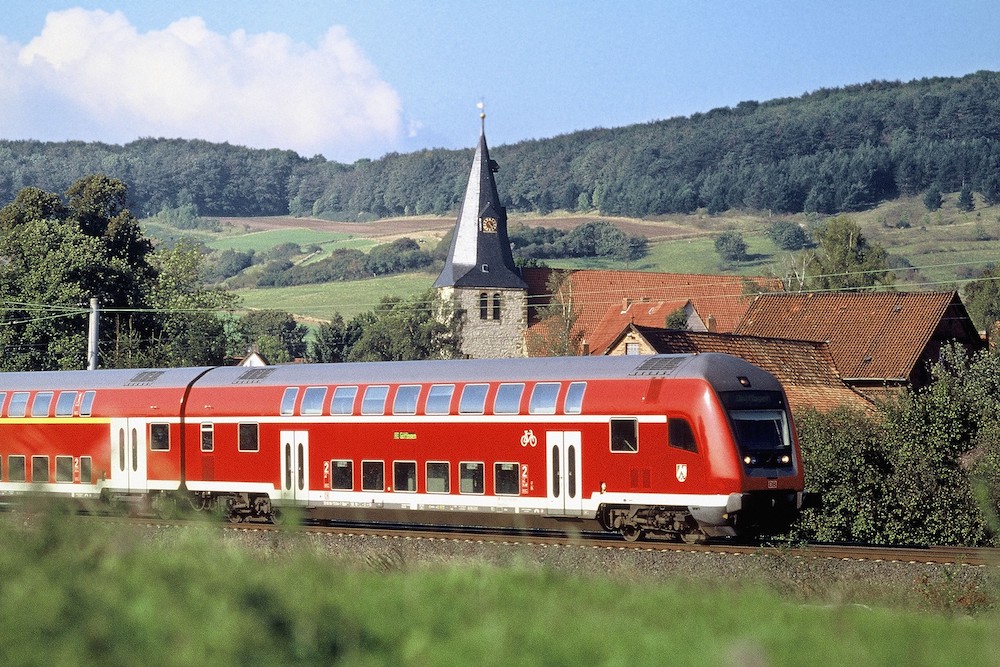
One of Bombardier Transportation’s products, a double-decker coach train in Germany. Image courtesy Bombardier.
When designing these components, Rynkiewicz noticed that going back and forth between a supplier and a customer could take up to 1–3 weeks between each iteration. He wanted to accelerate this process and be able to give colleagues answers to questions about component dimensions, losses, and mass more quickly. “I saw a possibility to develop [an app] to go one step further with our engineering,” says Rynkiewicz.
Building an Application to Speed Up Magnetic Inductor Design
Inductor components are challenging to model because there are a lot of physical phenomena to implement. Another challenge comes from the material suppliers themselves, who often don’t share detailed data or knowledge about their products with the train designers.
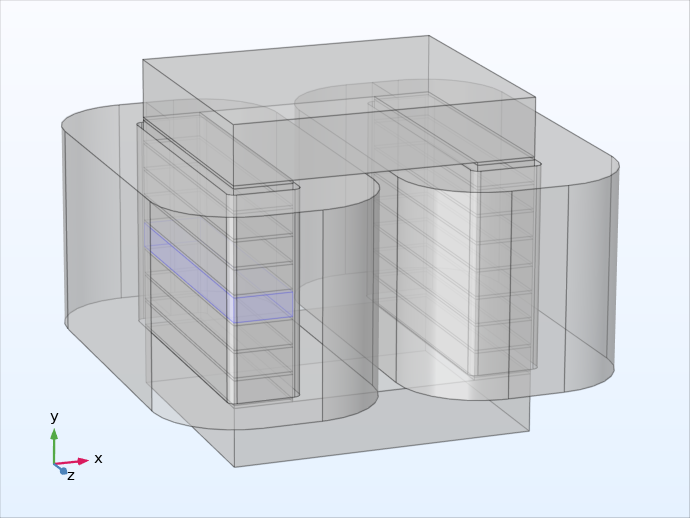
The model geometry of the 3D inductor. Image courtesy Mateusz Rynkiewicz of Bombardier Transportation.
Rynkiewicz used the Application Builder, built into the COMSOL Multiphysics® software, to design a simulation application for quickly computing the magnetic fields and heat transfer in a magnetic inductor for trains. The Application Builder enabled Rynkiewicz to select specific inputs and outputs based on his fully parameterized model of an inductor so that he could test the effect different changes have on the design without having to rerun the full model each time. “I really like the Application Builder,” said Rynkiewicz. “You feel like a programmer and a scientist at the same time.”
The app includes three tabs: Magnetic Field Calculation, Heat Transfer Calculation, and Reports.
Magnetic Field Calculation
The Magnetic Field Calculation tab includes inputs for changing a variety of different inductor parameters, like the core width, core winding material, and number of turns in the coil.
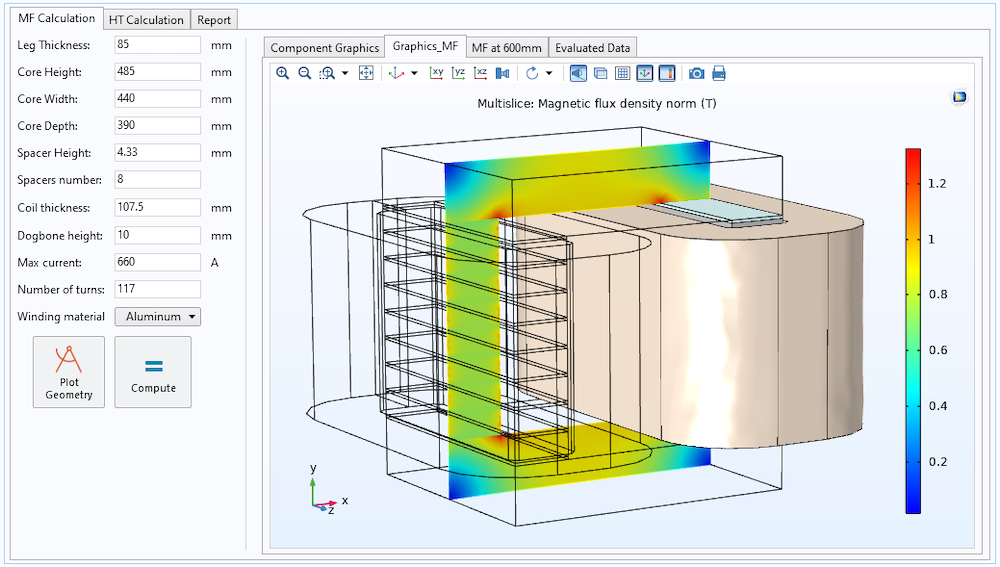
The inductor app showing results for the magnetic flux density in the inductor. Image courtesy Mateusz Rynkiewicz of Bombardier Transportation.
Results for the app include a 3D results plot of the magnetic field distribution and magnitude in the inductor, shown above, as well as a 2D plot of the magnetic flux density norm up to 600 mm from the inductor.
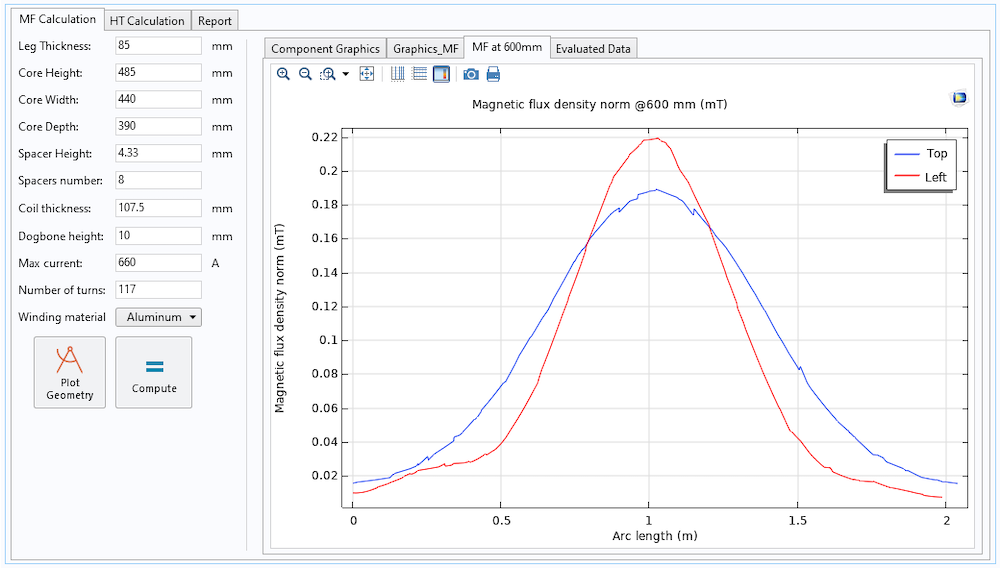
The app showing the magnetic flux density norm at 600 mm. Image courtesy Mateusz Rynkiewicz of Bombardier Transportation.
The magnetic flux density norm is especially important for Bombardier’s customers because it is an industrial constraint for passengers with pacemakers, who can be harmed by the effects of magnetic flux density that is too high.
Heat Transfer Calculation
The Heat Transfer Calculation tab enables Rynkiewicz to check the inductor design for hotspots and mean temperature. “In our business, we need to check where the hottest place in the component is and monitor it during train operation,” he said. An important input for this part of the app is the ambient temperature, which can be based on the customer’s home climate. An inductor designed for a train based in Singapore would have different requirements than one designed for Great Britain, for instance.
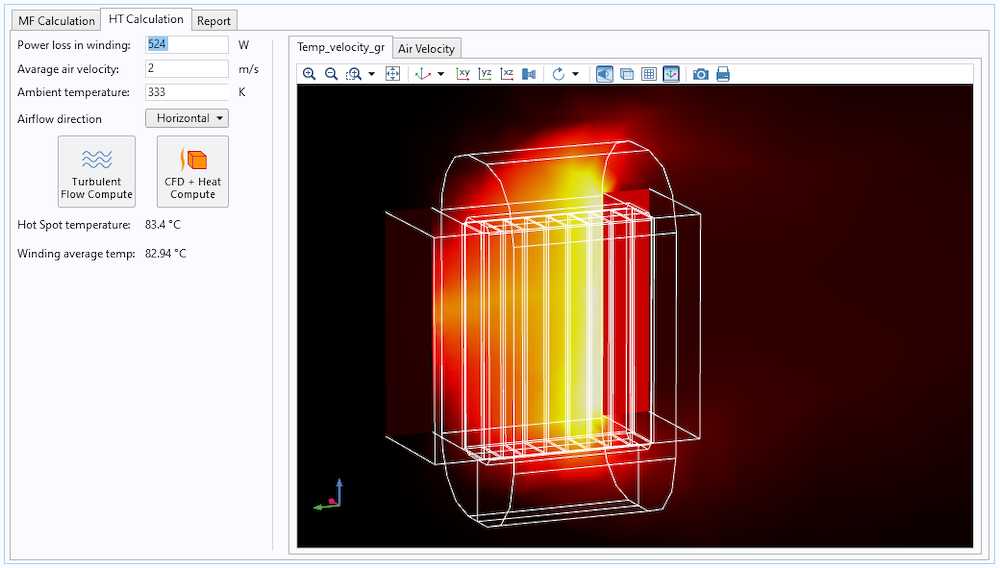
The app showing the hot spot in the inductor. Image courtesy Mateusz Rynkiewicz of Bombardier Transportation.
The airflow direction and magnitude is an important factor in inductor design. Sometimes inductors are cooled by air from fan; sometimes they are naturally cooled.
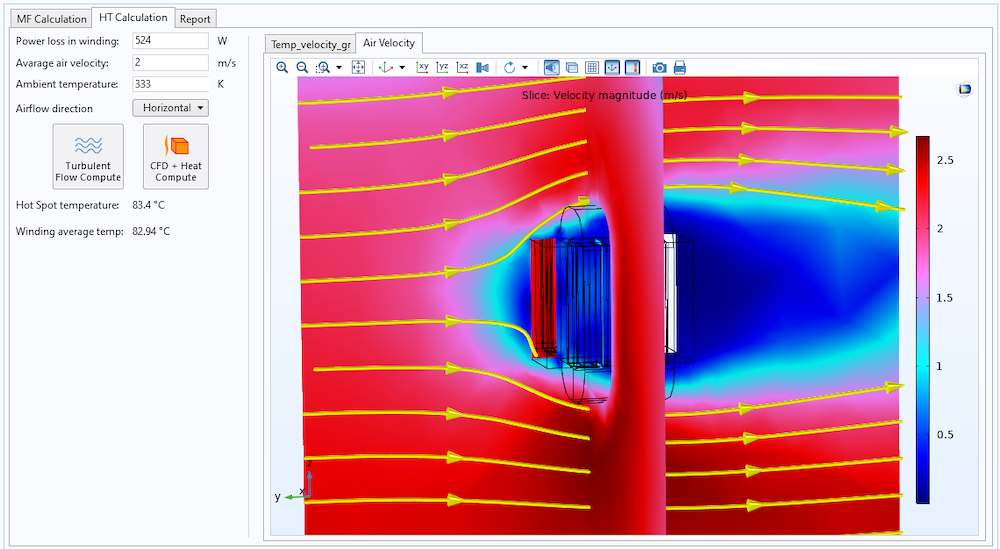
The app showing the velocity magnitude around the inductor. Image courtesy Mateusz Rynkiewicz of Bombardier Transportation.
The Benefits of Simulation for Product Development
The simulation app at Bombardier Transportation offers valuable previews of different inductor designs, enabling quicker back and forth between engineering teams.
In many cases, the inductor estimations help to save many days anticipating data from suppliers. By using the data provided by the app as a temporary substitute, they could continue working while waiting for the actual data from the suppliers to arrive. In many cases, this strategy has saved a lot of time and helped streamline the development process. The result? Happy customers, happy suppliers, and millions of passengers around the world reaching their destinations safely and quickly.
Learn More About Building and Deploying Apps
- Watch a 2-minute video on building and deploying apps with the COMSOL® software
- Find out 7 reasons why COMSOL customers are using apps
Editor’s note: When this blog post was published, Bombardier Transportation was a division of Bombardier Inc. In January 2021, Bombardier Transportation was acquired by Alstom.




Comments (0)